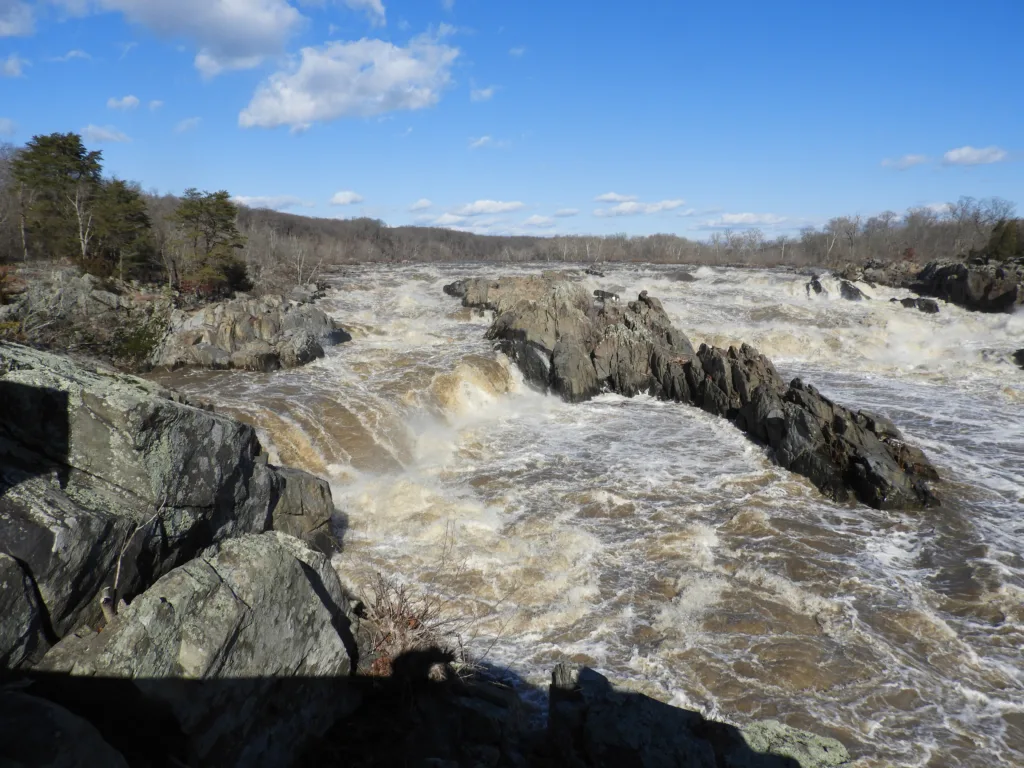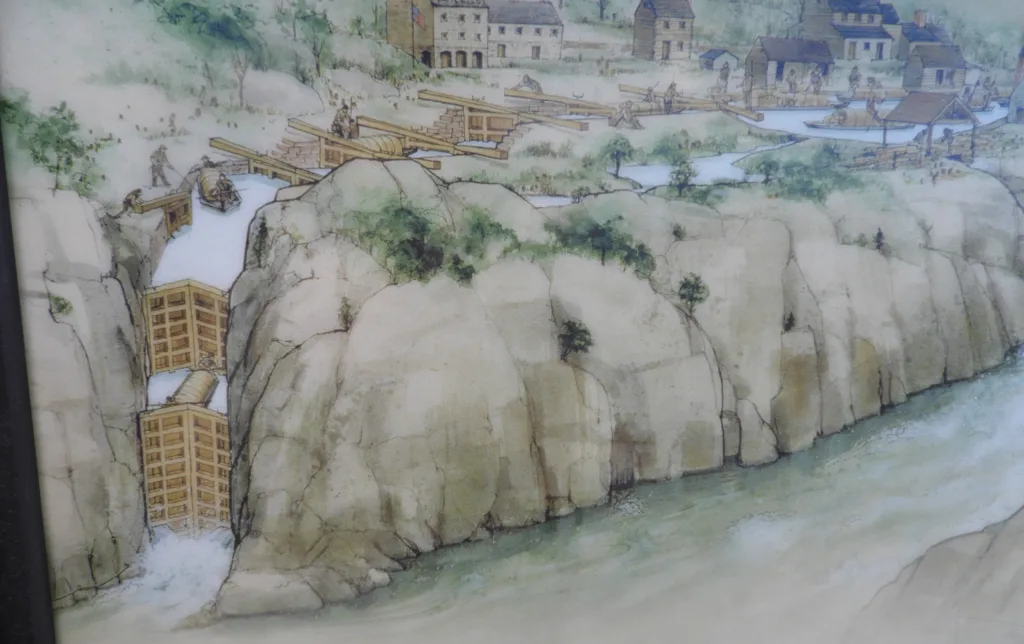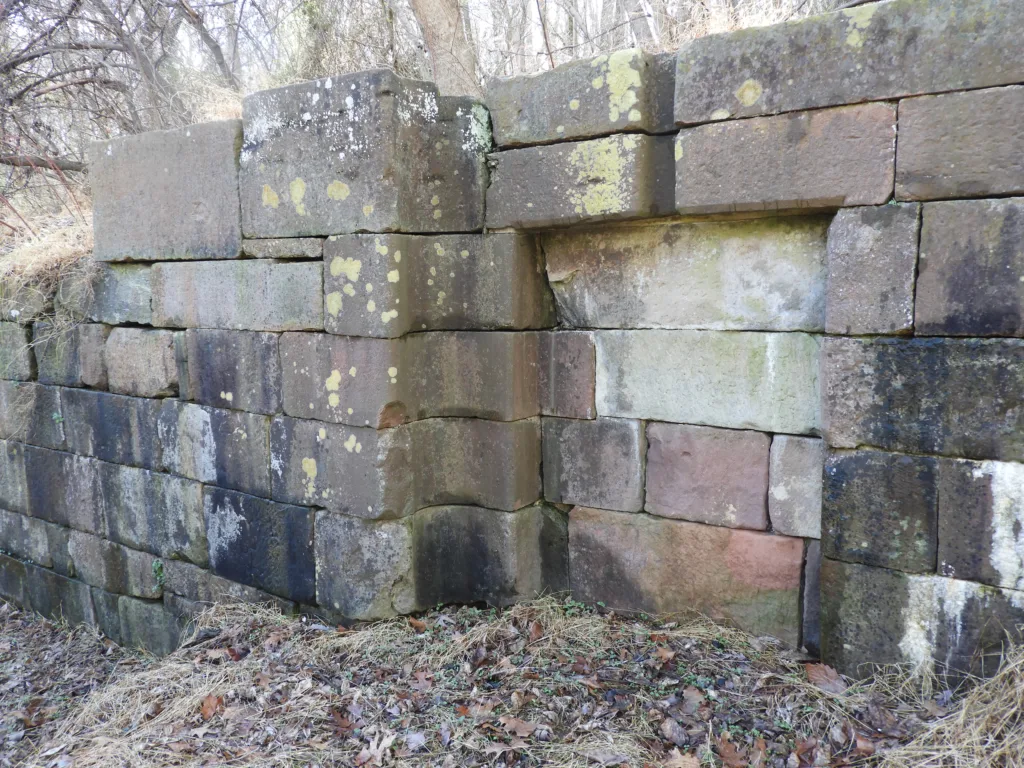Last Saturday (1/13/2024) was a perfect day for a brisk outdoor walk. The temperature was in the 40’s, and the sun was shining. I had been waiting for just such a day to re-visit Great Falls Park with particular interest in the ruins of the Potomac Company’s canal and locks.
An added attraction were the Falls themselves, which due to recent heavy rain were at their most ferocious. It is Great Falls, along Little Falls a bit down river, which presented to the Potomac Company the largest challenges to making the Potomac River truly navigable.
Founded by George Washington in 1785, the Potomac Company sent teams of free and enslaved men up the Potomac and all of its tributaries using black powder to “get the rocks out of way.” They built sluices where the rivers were shallow and bypasses where there were rapids. Buoys, chained to underwater rocks led the boatmen down the rivers safely. Remember, the Potomac Company wasn’t building a still-water canal as was built on the Maryland side of the river years later, rather they were simply “improving” the river.
In 1795 a canal was completed around Little Falls and in 1802 the canal around Great Falls. The later was a monumental work and enough of it survives to give one an idea of what was involved. The greatest challenge was to cut through sixty feet of solid rock and construct five locks in the final descent to the river.
With the completion of these two sets of locks, a boat could safely float down the Potomac River to Georgetown and beyond with tons of stone, wheat, coal and all the other products of the rich interior… BUT only on an average of fifty-seven days a year, that is, when it rained. All of the improvements by the Potomac Company were not sufficient to guarantee boat transport without the “freshets” which, usually, occurred in the spring.
This later problem was eventually solved by the still-water C&O Canal on the Maryland side of the river who’s ground-breaking was in 1828 and, ultimately, by the B&O Railroad which parallelled that canal.
Nevertheless, the river improvements by the Potomac Canal company helped Loudoun County and its surrounding neighbors become the Bread Basket of the world up through the Civil War.
If you want to read more of my illustrated short essays about the Potomac River of the past check out my other postings on this web site. The best book on the Potomac Company is by Robert Kapsch and is titled. “Potomac Canal: George Washington and the Waterway West.”









Leave a Reply